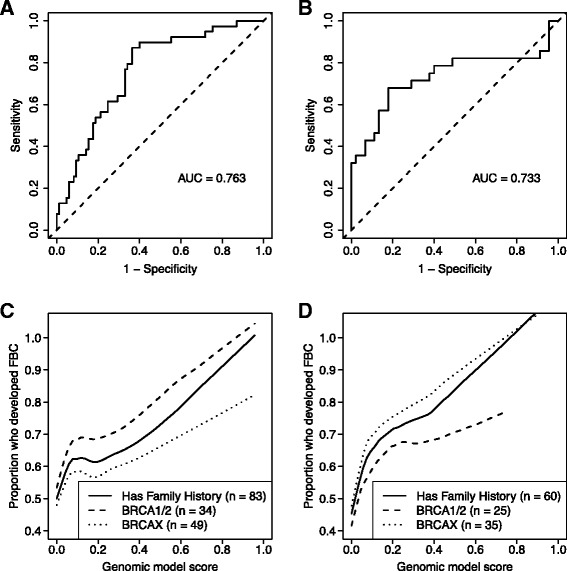Fig. 3.

Sensitivity and specificity of biomarker predictions. Because the support vector machines predictions (genomic model score) are probabilistic, we evaluated various cutoff thresholds at which patients could be considered to have had a “high” probability of developing familial breast cancer. a-b Receiver operating characteristic curves illustrate the balance between sensitivity and specificity across many probability thresholds for the Utah and Ontario cohorts. c-d As the genomic model scores increase, a larger proportion of patients who fell above the threshold would have been predicted accurately to develop familial breast cancer. As the threshold approaches its maximum, the predictive accuracy for patients above the threshold is nearly perfect; however, such high thresholds would result in low sensitivity levels. A threshold near 0.2 may be optimal. Panel C represents predictions for Utah participants who had a family history of breast cancer; Panel D represents the Ontario cohort. The dashed lines represent predictions for individuals who carried a BRCA1 or BRCA2 mutation. The dotted lines represent predictions for BRCAX individuals. (Plotted lines were fitted using a LOESS model [span = 0.5] for smoothing)
